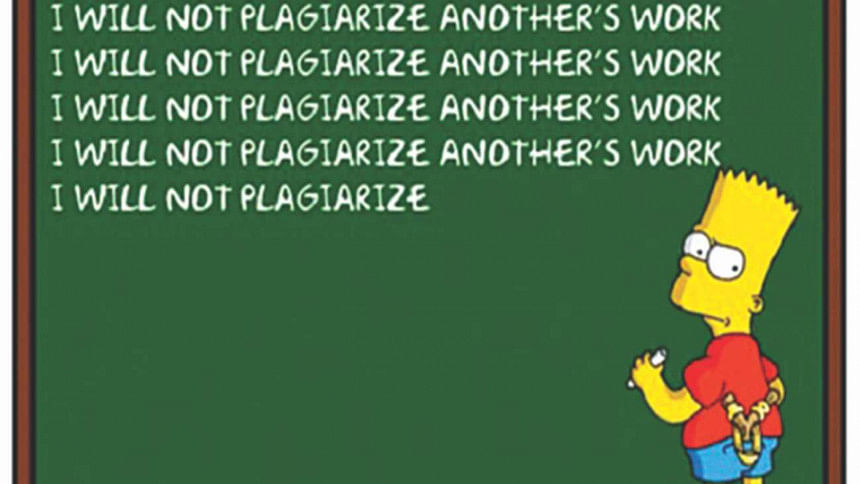Plagiarism: Why and how to avoid it

At some point in your student life you'll need to hand in written work. This may be an assignment, a term paper, or a thesis. Your academic institution will expect you handed in your own original work. The objective of any written work is to develop your ability to think, organise and present thoughts on your own. If you fail to submit written work of your own, you could be committing what's known as "plagiarism". It's worth spending time to know how to avoid plagiarism.
Oxford University defines plagiarism as "presenting someone else's work or ideas as your own, with or without their consent, by incorporating it into your work without full acknowledgement". Thus, your work has to be your own. It has to acknowledge sources of work that's not yours. We're assuming you're not intentionally plagiarising, but would like to know how to avoid unintentional plagiarism.

First, do not leave the writing task to the last moment. Second, make notes while you're researching. These are old school, but they are time-tested methods.
Your work can draw from other sources, but it has to be in your words. Paraphrasing is a technique of summarising what you read from an external source. The trick is: you can't use too many words from the main source verbatim (as it is). You may also need to cross-check references. This is where taking notes comes in handy. The more you re-visit something, the clearer it becomes, so you can write a story (description) in your own words.
If you're working from online sources, store PDFs of articles in a separate folder so you can re-visit them when needed. Go back to your notebook. Write down a summary of what the PDF sources say. Slowly, things will become clear. The problem arises if you're using webpages. For example, newspapers have an online version and a print version. The print version doesn't change once it's out, but the online version may change. Websites may add or move content after you checked the site. This is why, you have to mention at what date you accessed the webpage in your reference. When you submit, it's better to cross-check if the website material is still available. If not, it would be better to consult your instructor.
If you think you need to take an extract from a source, you will need to put the text in double inverted commas. If you think you need to take an entire paragraph or more from a source, you will need to indent the text. Both times, you will be expected to quote the source with the page number. You may come across another situation. While reading a text, you find a quote of another source. It wasn't possible to read that other source. In this case, you can use the cross-reference cited in the reference where you found it (with page number).
There are a few acknowledged methods for citations: the Harvard, the Chicago, the American Psychological Association (APA), the Modern Language Association (MLA) style and some more. You will need to know which citation method your institute prefers. Don't rush referencing. Go back to your notebook where you took down notes to cross-check.
Many times, you will need to collaborate with course-mates. Collaborative discussion brings the best out of you and your friends. This is where you need to be careful. In a small class-size, it's easy for the instructor to spot if people have collaborated, but didn't make themselves distinct in their own work.
Nowadays you are required to provide a soft-copy of your written work. This enables education institutes to check through free and professional plagiarism checking software. As a last resort, it may be a good idea to check your written work through one of many free plagiarism checkers.
A good written work is one that tells a good story. When the reader finds discontinuities in the flow of logic or one section not connecting to others, the reader becomes curious. In a digital age, even a Google search can detect if texts have been extracted from an unquoted source. Plagiarism is a moral crime in the academia. The more institutes educate students, the more honest and hardworking students will make an effort to make themselves stand out from the crowd.
Asrar Chowdhury teaches economic theory and game theory in the classroom. Outside he listens to music and BBC Radio; follows Test Cricket; and plays the flute. He can be reached at: [email protected]

 For all latest news, follow The Daily Star's Google News channel.
For all latest news, follow The Daily Star's Google News channel. 



Comments